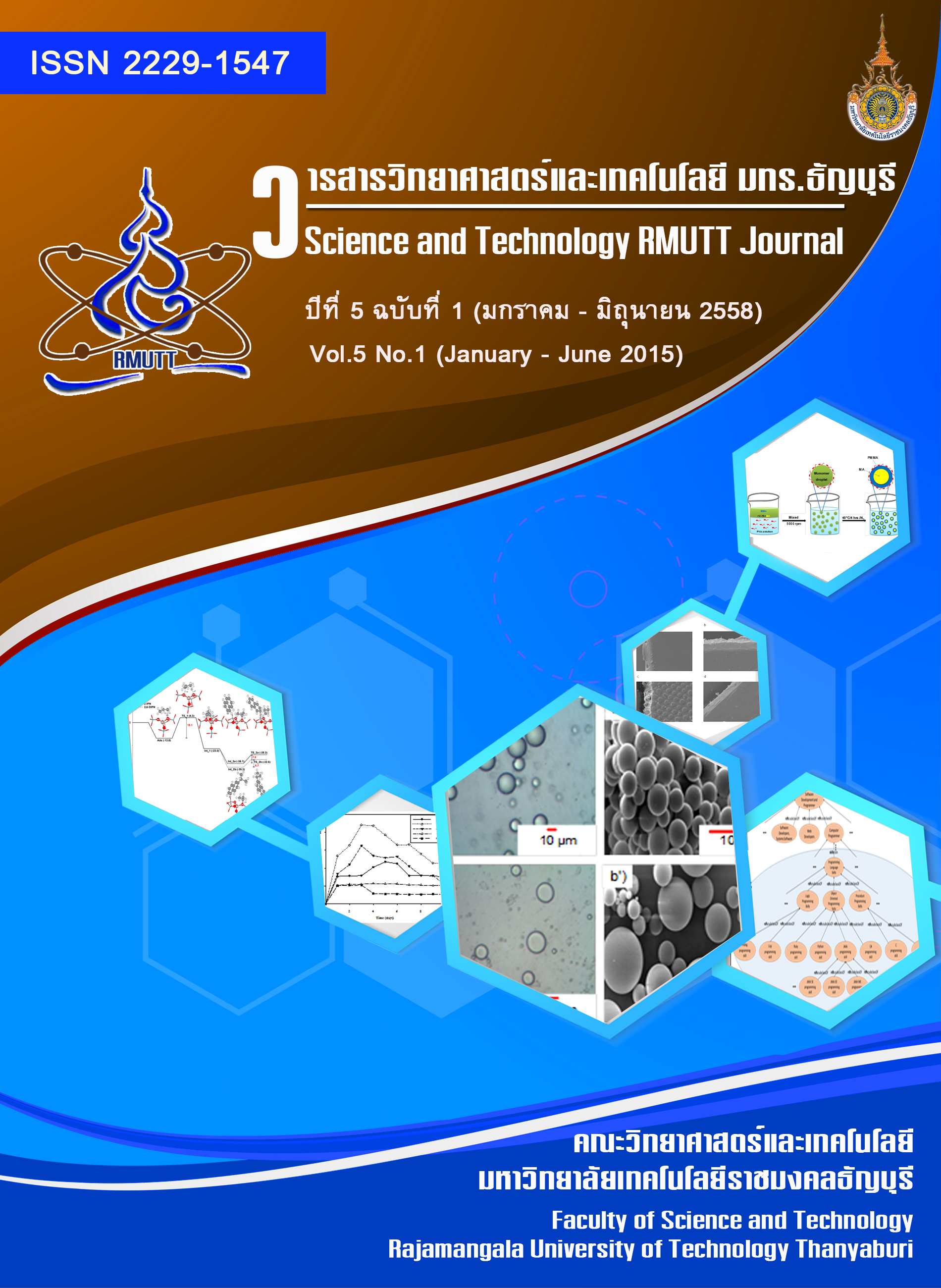Development of photoelectrocatalysis techniques for phenolic compound degradation under solar light
Main Article Content
Abstract
This research, photoelectrocatalysis (PEC) was developed for phenolic compound degradation using FTO/WO3/BiVO4 electrode. Cumene hydroperoxide (CHP) was selected as the phenolic compound for studying with photoelectrocatic property and the degradation process. The photoelectrocalytic properties were studied by cyclic voltammetry under visible light irradiation. The decreased amount of the CHP was determined by a UV/Vis spectrophotometer. Potential and power of light source given to the system were studied for the optimization and the mechanism of the CHP degradation process. Moreover, a COD value was studied in order to confirm the conversion of all organic compounds in the system. The optimal condition found that the PEC technique could eliminate CHP compound which can be released into the water. This indicated that the developed technique represented high efficiency for the removal of phenolic compound which is suitable for water treatment systems.
Article Details
References
G. Waldner, M. Pourmodjib, R. Bauer and M. Neumann- Spallart. Photoelectrocatalytic degradation of 4-chlorophenol and oxalic acid on titanium dioxide electrodes. Chemospere 50 (2003): 989-998.
M. Fan, C. Yang, W. Pu and J. Zhang. Liquid phase deposition of ZnO film for photoelectrocatalytic degradation of p-nitrophenol. Mat. Sci. in Semicon. Proc. 17 (2014): 104–109
G. Qinb, Q. Wua, Z. Sunb, Y. Wangb, J. Luob and S. Xueb. Enhanced photoelectrocatalytic degradation of phenols with bifunctionalized dye-sensitized TiO2 film. J. Hazard. Mater. 199 (2012): 226-232.
Y. Cong, Z. Li, Y. Zhang, Q. Wang and Q. Xu. Synthesis of Fe2O3/TiO2 nanotube arrays for photoelectro-Fenton degradation of phenol. Chem. Eng. J. 191 (2012): 356-363.
L.C. Chena, Y.C. Hoa, W.S. Guoa, C.M. Huangb and T.C. Panb. Enhanced visible light-induced photoelectrocatalytic degradation of phenol by carbon nanotube-doped TiO2 electrodes. Electrochim Acta. 54 (2009): 3884-3891.
X. Zhanga, S. Chena, X. Quana and H. Zhaoa. Preparation and characterization of BiVO4 film electrode and investigationof its photoelectrocatalytic (PEC) ability under visible light. Sep Purif Technol. 64 (2009): 309-313.
B. Zhou, J. Qu, X. Zhao and H. Liu. Fabrication and photoelectrocatalytic properties of nanocrystalline monoclinic BiVO4 thin-film electrode. J. Environ. Sci. 23 (2011): 151-159.
H. Parka, A. Baka, Y.Y. Ahnb, J. Choic and M.R. Hoffmannnc. Photoelectrochemical performance of multi-layered BiOx–TiO2/Ti electrodes for degradation of phenol and production of molecular hydrogen in water. J. Hazard. Mater. 211 (2012): 47-54.
C. Ponchio, S.y. Kishioka, Y. Murakami, A.Y. Nosaka and Y. Nosaka. FTO/SnO2/BiVO4 Composite Photoelectrode for Water Oxidation under Visible Light Irradiation. Electrochem Solid St. 11 (2008): H160-H163.
C. Ponchio, S.y. Kishioka, Y. Murakami, A.Y. Nosaka and Y. Nosaka. Efficient photocatalytic activity of water oxidation over WO3/BiVO4 composite under visible light irradiation , Electrochim Acta. 54 (2009): 1147- 1152.
C. Ponchio, S.y. Kishioka, Y. Murakami, A.Y. Nosaka and Y. Nosaka. Enhanced photoelectrocatalytic activity of FTO/WO3/BiVO4 electrode modified with gold nanoparticles for water oxidation under visible light irradiation, Electrochim Acta. 55 (2010): 592–596.
C. Ponchio, A.Y. Nosaka and Y. Nosaka. Photoelectrocatalytic performance of WO3/BiVO4 toward the dye degradation. Electrochimica Acta. 94 (2013): 314– 319.


